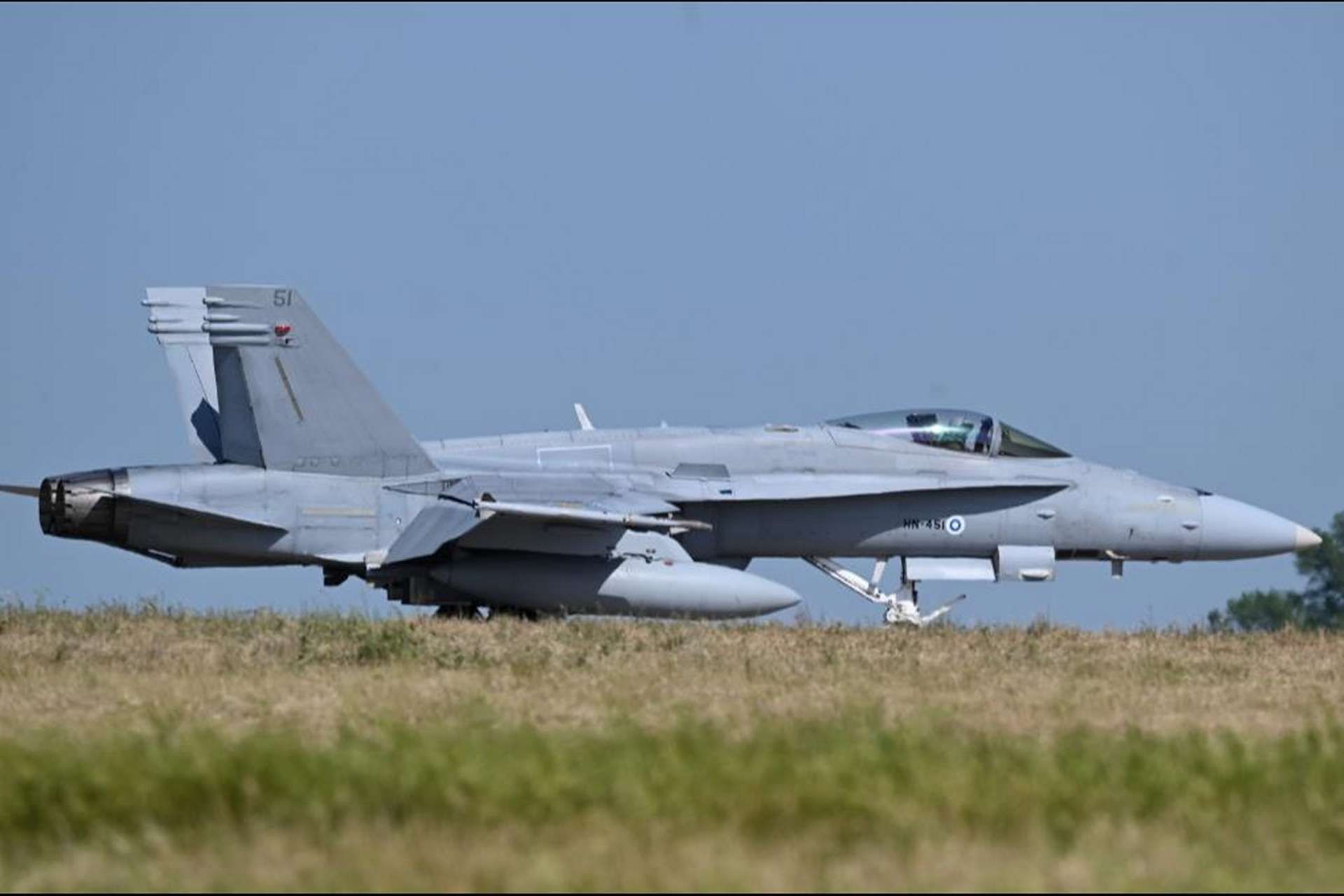Breaking news
Finland's F/A-18 Hornets Join NATO's Air Policing Mission in Romania for First Time.
On June 3rd 2024, seven Finnish Air Force F/A-18 Hornets landed at Mihail Kogălniceanu Air Base near Constanța, Romania, marking the beginning of Finland's first deployment under NATO's air policing mission. This move comes as Finland seeks to strengthen its military integration and cooperation within the Atlantic Alliance.
Follow Army Recognition on Google News at this link

Finnish Air Force F/A-18 Hornets landed at Mihail Kogălniceanu Air Base near Constanța, Romania (Picture source: NATO)
According to Lieutenant Colonel Rami Lindström, commander of the Finnish detachment, the primary goal of this mission is to enhance the integration of Finnish air forces within NATO's structure and to enhance cooperation with the air forces of member countries, particularly the British Royal Air Force and the Romanian Air Force. The Finnish detachment, consisting of about a hundred soldiers, will work closely with a detachment of RAF Typhoons to carry out quick-reaction alert missions and patrol flights in NATO airspace.
It's worth noting that Finland's integration into NATO was officially completed in 2022. Historically neutral, Finland sought to bolster its national security by aligning with the Atlantic Alliance, driven by geographic proximity and security challenges related to Russia. This membership not only strengthens Finland's security position but also extends NATO's defensive perimeter in Northern Europe. Integration involves active participation in NATO's military exercises, surveillance, and defense missions, as well as in the alliance's political and strategic decisions, contributing to a more robust and interconnected European security architecture.
NATO's air policing mission, a cornerstone of the alliance's collective security, aims to monitor and protect the airspace integrity of member states during peacetime. Concurrently, the air protection mission, in which the Finnish Hornets are participating in, consists of an increased presence of fighter jets and air defense units primarily based in NATO's eastern member states.
In addition to patrol and alert operations, the Finnish detachment will participate in the Ramstein Legacy exercise in June, a major NATO air and missile defense exercise designed to strengthen interoperability among allied air forces. This mission represents a significant step for Finland, a newly admitted NATO member, to test and develop its operational capabilities in a multilateral context.
The F/A-18C and F/A-18D Hornets are twin-engine multi-role fighters used by the Finnish Air Force, where they form a critical component of the country's air combat capability. Introduced into the Finnish Air Force between 1995 and 2000 to replace aging Saab Draken and MiG-21bis interceptors, these aircraft were chosen for their versatility and ability to operate in varied weather conditions. Finland acquired the two-seaters built in the United States by McDonnell Douglas (which later merged with Boeing) and the single-seaters assembled locally at Patria Finavitec. Currently, the Finnish Air Force operates 62 of these aircraft, including 55 single-seat F/A-18Cs and seven two-seat F/A-18Ds.
Technically, the Finnish Hornets are equipped with two General Electric F404-GE-402 engines, each providing a thrust of 78.30 kN with an afterburner. These aircraft have a wingspan of 11.43 m, a length of 17.10 m, and a height of 4.67 m. They can reach a maximum speed of 1,300 km/h at sea level and Mach 1.8 at altitude, with an operational ceiling of 15,000 m. Their armament includes a 20 mm M61 Vulcan cannon and various missiles and bombs, such as the AIM-9 Sidewinder, AIM-120 AMRAAM, JDAM, JSOW, and JASSM, suitable for air-to-air and air-to-ground missions.
The Finnish Air Force has also undertaken an extensive mid-life upgrade program for these aircraft to maintain their competitive capability. Updates have included the integration of advanced systems such as the APG-73 radar, BOL countermeasure system, JHMCS helmet-mounted sighting system, and the Link 16 tactical data link, enabling improved interoperability in combined operations. These enhancements strengthen Finland's defense posture by enabling effective response to various aerial threats and supporting joint operations with other defense units.


























